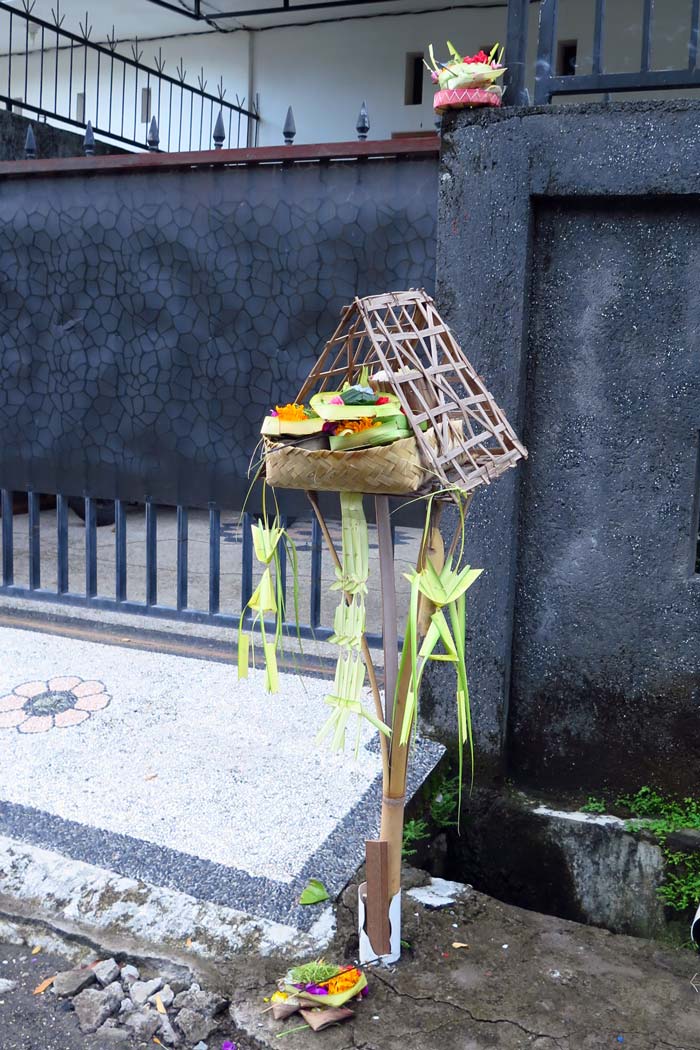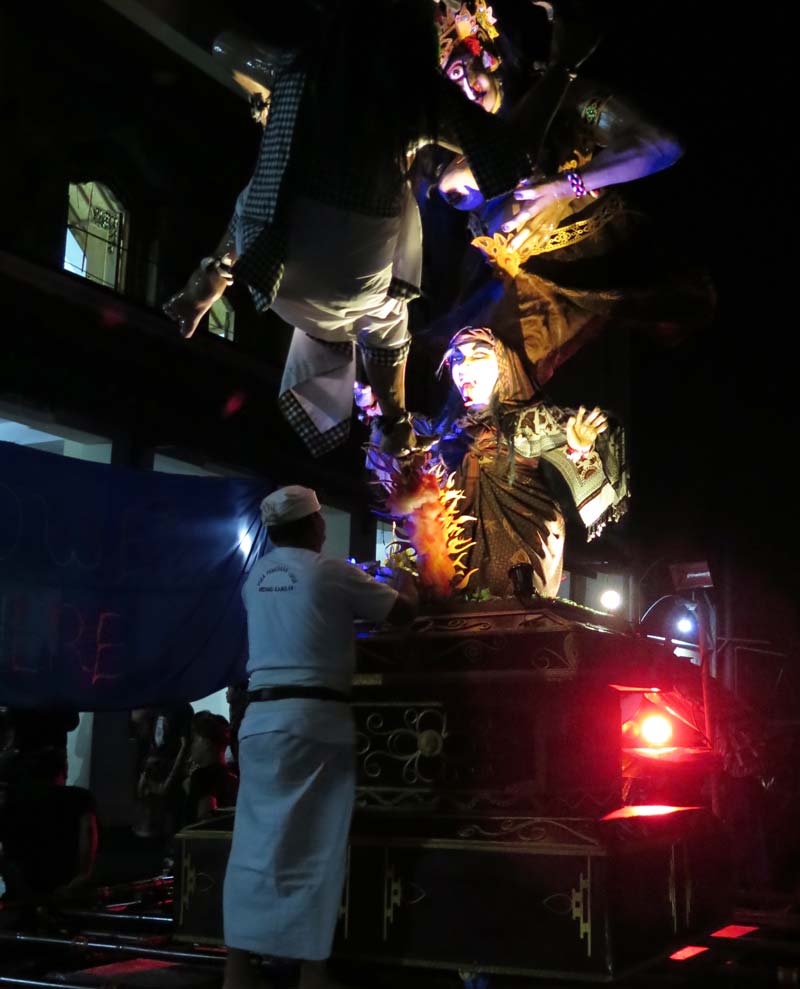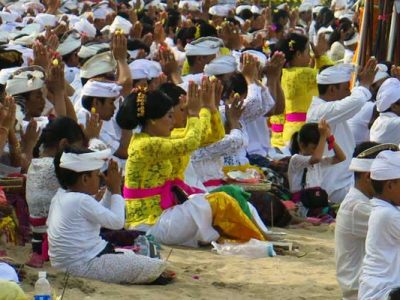Nyepi – The Calm After The Storm (Part 2)
In our previous post, we wrote about preparations and ceremonies that take place before Nyepi. Today we’ll continue with Nyepi’s Eve rituals and parades, that are held to scare away evil spirits.
Here are the main events and dates of Balinese New Year celebrations:
- 24. – 26. March – Melasti – cleansing ceremonies on beaches.
- 27. March – Pengerupukan – celebrations and parades to scare away evil spirits.
- 28. March – Nyepi – Balinese New Year or the Silence Day. The island is “shut down” for 24 hours.
- 29. March – Ngembak Geni – Bali wakes up again, people are visiting family and friend to ask for forgivenss (also youth’s kissing ritual in Denpasar).
Nyepi’s Eve – loud parades to scare away evil spirits
The day before Nyepi is the most entertaining part of Balinese New Year celebrations. During the day, mecaru ceremonies are held and sacrefices are made in order to please evil forces (bhuta kala) and make balance with them. Besides other offering, also a chicken is usually sacrificed. People get grumpy when they are hungry… so do evil forces. Similarly to other gods and spirits, daily offerings are made to evil spirits, to keep balance between the good and the evil. These contain usually rice, alcohol, cigarettes, onion, ginger or something similar. Unlike other offerings, these are always put on the ground.
During the day you’ll also see small bamboo temples (sanggah cucuk) starting to appear in front of houses. They are used to protect the house – once the evil spirits are scared out, sanggah cucuk won’t let them come back in. That kind of temples are used only once a year, during Nyepi.
Scaring away the evil spirits starts from homes after the sunset, as the negative energies are most active in darkness. After praying and placing offerings into the small bamboo temple (to ”activate it”), people start to make noise. Clapping or hitting pots and pans together, in order to scare evil spirits out to the street. Sometimes even torches are used and dried coconut husk is burnt to scare and confuse them with fire and smoke. After this ritual is done, the homes are cleared – negative forces are driven out and sanggah cucuk is keeping them away, so they can’t disturb people on the Silent Day.
Next, it’s time to clear streets and villages from the evil. Ogoh-ogohs will help to achieve that. All the scary figures are fixed on bamboo frames and brought out to the streets during the day. Balinese priests have checked (and felt) ogoh-ogohs and asked to attach a sanggah cucuk (small bamboo temple as used in front of houses) to some of the masterpieces. As stronger forces might try to “hijack” some ogoh-ogohs, additional protection (sanggah cucuk) must be added to prevent it from happening.
People start to gather on the streets around 6-7 pm. Young community musicians are ready to make the parade even more frightening by playing aggressive and fast music. Once the time is right (there’s no certain time), ogoh-ogohs are lifted up and parading the streets and villages may begin. All the main intersections are covered, as they are believed to be meeting points of evil spirits. Parades usually start from smaller streets and move towards bigger ones. More communities and ogoh-ogohs join the parade on the way. The main show usually takes place on a larger intersection or field, where musicians and dance groups make their performances and ogoh-ogoh builders demonstrate their maneuvering and dancing skills with their masterpieces.
The parade is ended by setting ogoh-ogohs on fire. Sculptures must be burnt, so the confused and scared away evil spirits have nowhere to attach during Nyepi, the Day of Silence. Some builders keep their figures, as they can earn money by selling them.
The parade is over around midnight. People head back to their homes to spend the next day in complete silence. We’ll write about Balinese New Year or the Silence Day and its meaning in our next post.
Selamat Hari Raya Nyepi (Happy Nyepi!) 🙂






